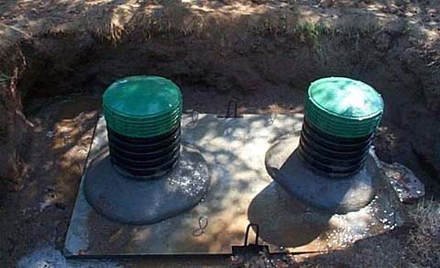Septic Tank Riser Installation: Why It’s Essential for Every Homeowner
Septic tanks play a vital role in managing household wastewater safely. However, accessing them for inspection or maintenance can be tricky without proper equipment. This is where septic tank riser installation comes into play. It offers an easy, safe, and effective way to reach your septic system without digging every time.
If you want a hassle-free septic system, understanding riser installation is crucial. This guide breaks down what a septic tank riser is, why you need one, and how to install it properly.
What Is a Septic Tank Riser?
A septic tank riser is a cylindrical extension attached to the septic tank’s access opening. It raises the access point to ground level. This makes it easy for homeowners or professionals to inspect, pump, or repair the tank.
Without a riser, you must dig through the soil each time you need access. This process wastes time, damages your lawn, and can be unsafe. Risers prevent these problems by providing a permanent, convenient access point.
Why Is Septic Tank Riser Installation Important?
First, it improves safety. Open septic tank lids can pose serious hazards. A riser system usually includes a secure lid that fits flush with the ground. This reduces the risk of accidents for children, pets, and adults.
Second, it saves money and effort. Regular maintenance is vital to prevent costly repairs or system failures. With a riser, septic tank pumping or inspections take less time. This reduces labor costs since there’s no need to dig each time.
Additionally, a riser protects your landscaping. Heavy digging equipment damages grass and plants. Installing a riser keeps your yard intact and saves you from replanting or repairing.
Materials Used in Septic Tank Risers
Risers come in different materials. Plastic and concrete are the most common. Plastic risers are lightweight and resistant to corrosion. Concrete risers are durable and heavier, offering stability in various soil conditions.
Choose a riser material based on your tank type, budget, and local codes. Plastic is often easier to install and handle. Concrete is preferred for long-term durability in harsher environments.
Step-by-Step Septic Tank Riser Installation
You can hire professionals or do the installation yourself if you have some DIY experience. Here’s a simple outline of the process:
- Locate the Tank Lid: Use your septic system map or a probe tool to find the exact location of your septic tank lid.
- Dig Around the Lid: Remove soil carefully to expose the entire lid and the area needed to install the riser.
- Clean the Tank Opening: Clear away dirt and debris from the tank’s access opening to ensure a good seal.
- Attach the Riser Base: Place the riser base over the opening. Secure it with a suitable sealant or gasket to prevent leaks and odors.
- Stack Riser Sections: If your riser has multiple sections, stack them until the top reaches ground level.
- Secure the Riser Lid: Finally, place the riser lid on top. Make sure it locks or seals securely for safety.
- Backfill the Area: Fill the surrounding area with soil and compact it firmly. Restore the surface with grass or gravel as needed.
Important Tips to Remember
- Always check local regulations before installation. Codes may require specific riser sizes or materials.
- Use a tight-sealing lid to prevent odors and keep pests out.
- Consider reflective markers on the riser for easy locating, especially in winter or tall grass.
- Inspect risers periodically for cracks or damage. Replace parts if necessary.
- Avoid heavy machinery near the riser to prevent damage.
Benefits Beyond Easy Access
A septic tank riser does more than ease access. It promotes regular maintenance. With easier inspections, you are more likely to keep your septic system in good condition.
Proper riser installation also helps preserve your property value. Potential buyers see well-maintained septic systems as a sign of care. This can make your home more attractive in the market.
When to Install a Septic Tank Riser?
Many homeowners wait until they face trouble. This delay often results in costly repairs or emergencies. It’s best to install a riser when the tank is new or during routine maintenance.
If your septic system is older and you don’t have a riser, consider adding one soon. The benefits outweigh the initial installation cost.
Common Questions About Septic Tank Risers
Q: Can I install a riser myself?
A: Yes, if you have basic tools and follow safety guidelines. However, professional help ensures the job meets codes.
Q: How much does installation cost?
A: Costs vary by material and labor but generally range from $200 to $800.
Q: Will a riser cause system problems?
A: No, when installed correctly, risers do not affect septic tank performance.
Final Thoughts
Septic tank riser installation services is a smart investment for every homeowner with a septic system. It offers safer access, easier maintenance, and protects your landscaping. By installing a riser, you ensure quick inspections and avoid digging hassles.
If you want to protect your septic system and property, consider installing a riser today. It saves time, money, and headaches in the long run.
Ready to improve your septic system’s access? Contact us for expert septic tank riser installation. Keep your maintenance hassle-free and your yard safe. Call now to schedule a consultation!
